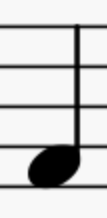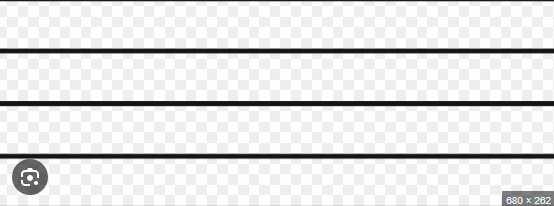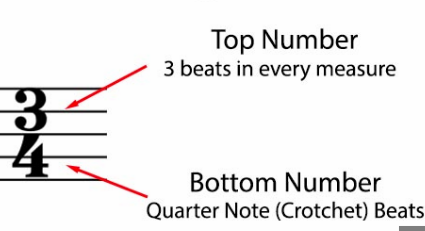MUSC 10003 - Experiencing Music: Exam 1 Flashcards
1/36
There's no tags or description
Looks like no tags are added yet.
Name | Mastery | Learn | Test | Matching | Spaced |
|---|
No study sessions yet.
37 Terms
Music
The art of combining sounds to create harmony, melody, and rhythm to express emotions or ideas.
Melody
A sequence of notes forming the main tune.
Harmony
Combination of notes played together for a pleasing sound.
Rhythm
The pattern of beats or timing in music.
Timbre
The unique sound quality of an instrument or voice.
Dynamics
The volume of music (loud or soft).
Texture
How layers of sound interact (thick or thin).
Form
The structure or layout of a musical piece.

Notes
Symbols representing sound and pitch.

Staff
Five horizontal lines where notes are written.

Clef
Symbol indicating pitch range (e.g., treble clef for high notes, bass clef for low notes).

Time Signature
Tells the number of beats per measure and the note value of each beat.

Key Signature
Shows which notes are sharp or flat in the piece.

Rest
Symbols indicating silence for a specific duration.
Tempo
Speed of the music (e.g., Allegro – fast, Adagio – slow).
Accelerando
Gradually speeding up.
Ritardando
Gradually slowing down.
Crescendo
Gradually getting louder.
Decrescendo
Gradually getting softer.
Pitch
Perceived highness or lowness of a sound.
Overtones
Higher frequencies that resonate with the main pitch.
Frequency
Number of sound wave vibrations per second (measured in Hertz).
Amplitude
Determines volume (loudness).
Duration
Length of time a sound lasts.
Strings
Violin, Viola, Cello, Double Bass, Harp.
Woodwinds
Flute, Clarinet, Oboe, Bassoon.
Brass
Trumpet, Trombone, French Horn, Tuba.
Percussion
Timpani, Snare Drum, Cymbals, Xylophone.
No Piano
The harpsichord and organ were common; the piano was just emerging.
Music Purpose
Mostly for church, royal courts, or ceremonies—less for public concerts.
Patronage System
Musicians worked for churches or nobility, not as independent artists.
Ornamentation
Baroque music was highly decorative and expressive.
Cantata
Vocal work with instrumental accompaniment, often sacred.
Concerto
Composition featuring a soloist with an orchestra.
J.S. Bach
German composer and organist known for intricate counterpoint and works like 'The Well-Tempered Clavier'.
G.F. Handel
German-born composer known for operas and oratorios like 'Messiah', influential in British music.
A. Vivaldi
Italian Baroque composer known for 'The Four Seasons' and influential in shaping the concerto form.